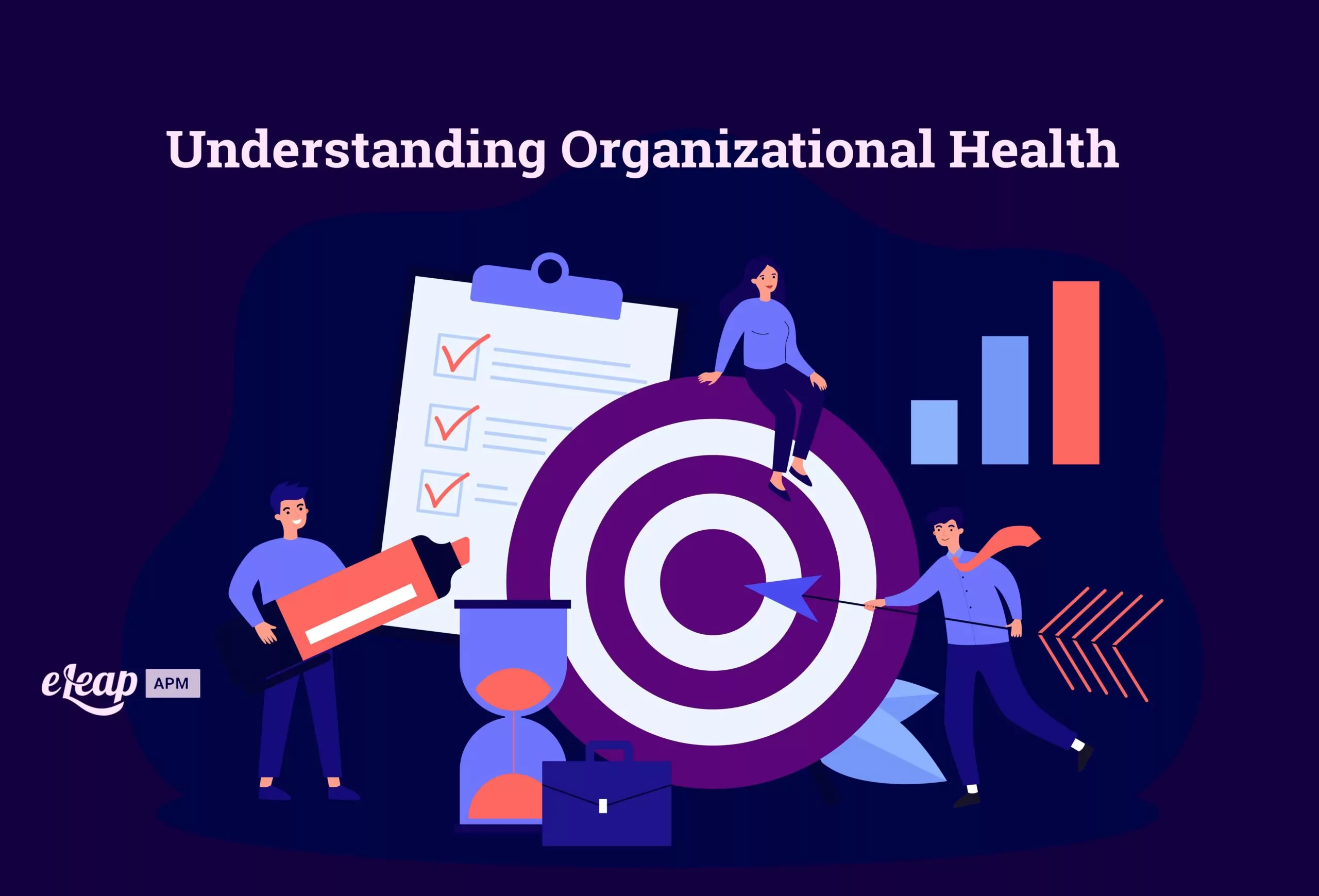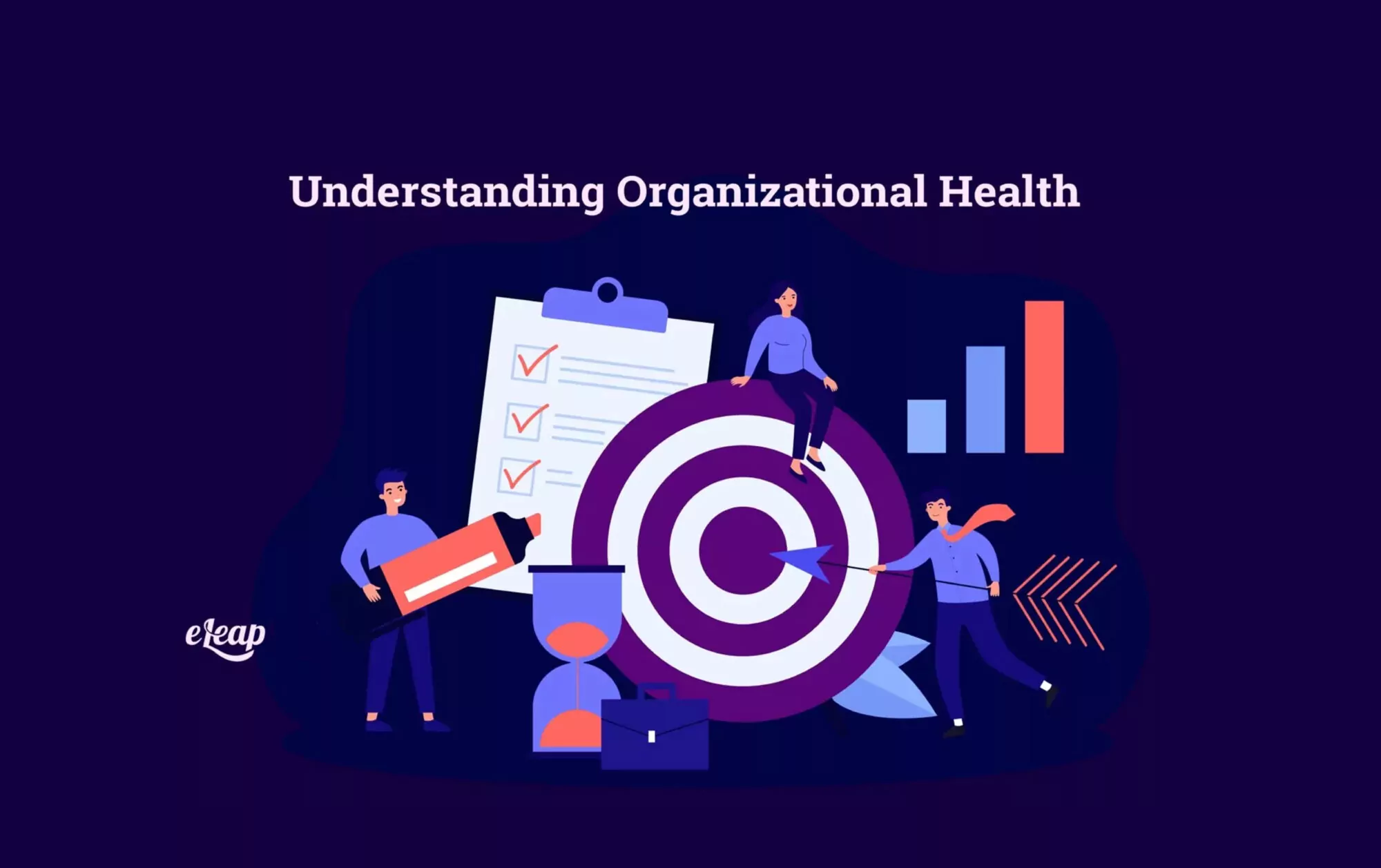Understanding Organizational Health

Understanding organizational health initially means putting aside your thoughts about what health is. Most of us think about our physical or mental well-being when discussing health. On the other hand, organizational health is what company executives want to achieve. Optimum organizational health includes efficient performance standards and procedures more likely to foster overall success.
We engage in practices to regulate several interconnected systems in the human body’s ecosystem, including the physical system of organs, muscles, and tissue, as well as our mental and energetic/spiritual systems. Business health can be impacted by our deliberate conduct, just like our physical health, where we have tools to bring us back to stasis.
Organizational Health Vs. Physical and Mental Health
The focus on organizational health is just as important as focusing on the traditional determinants of company performance. Organizational health is the organization’s ability to align, execute, and renew itself faster than its competitors.
Building a robust ecosystem that can change over time and adapt to new situations and difficulties is the key to achieving the ultimate competitive advantage.
Consider your own body. When you are ill, you can repeatedly use over-the-counter drugs or even antibiotics for bacterial infections. Alternately, you can design systems that ensure a clean environment, balanced food, and enough rest and exercise.
This translates into developing core values, creating quarterly growth plans, and implementing routine employee check-ins. A healthy ecosystem will be developed differently depending on each firm’s history, rivals, team composition, and shared values.
Organizational health is the ability of an organization to align, carry out, and refresh itself faster than the competition to sustain excellent performance throughout time. These management philosophies are not hippy new age.
According to research, a company’s overall health determines 50% of its long-term financial success. To obtain organizational health, there are seven things to strive for within your company.

Seven Variables of Organizational Health
Organizational health includes psychological, physiological, and social aspects. There is no sure way to keep an organization in place while ensuring its ideal physical and mental health. Despite this, the following seven significant factors all positively influence the organization’s health.
Organizational Cohesion
Organizational alignment ensures the workforce understands the business’s mission, values, and strategy. When the subject of organizational alignment is discussed, the first thing that comes to mind is sales and marketing alignment.
Although every department, including finance, IT, human resources, customer support, etc., is affected by organizational alignment, consistent work is required to align the organization. It’s essential to convey a broader picture outlining how team members’ successes contribute to the firm’s overall success, even while each team member may grasp their intelligent goals and career development plan with clarity.
One method of achieving organizational alignment is establishing a knowledge base that serves as a single recorded source of truth. This tool will promote transparency and enable collaboration among staff members working in various departments.
For organizational health alignment to occur, you must have the following:
- Interdisciplinary cooperation
- Shared aspirations and goals
- A final objective or goal
- Goals for individual and organizational performance that connect to the business strategy
- A grasp of each other’s respective roles
Undoubtedly, organizational alignment has numerous advantages, including enhanced employee relationships, employee loyalty, and a cohesive workforce working toward the same objectives. Together, these advantages form the basis for a healthy firm.
Clearly Communicated Workflows and Processes
Achieving organizational alignment requires excellent communication. Managers must work hard to maintain open, honest communication within firms, regardless of the industry.
The dominance of remote labor has made communication management a significant challenge for distributed enterprises. With the move to remote working, 33% of employees think communication has become more complex. Additionally, management at non-tech organizations struggles to address poor communication among office-bound and front-line employees.
Few businesses can boast excellent communication. What does this decrease imply for organizational health?
Poor internal communication causes more significant employee turnover in 35% of businesses. A healthy organization addresses the issue by developing extensive regulations that govern the communication between stakeholders, employees, and the community at large.
The Welfare and Advancement of Employees
Managers should shift their attention from monetary incentives to employee welfare to sustain a healthy firm. Workplace happiness influences various factors, including employee mental health, workplace safety, physical health, social relationships, and work attitude.
Many companies increased spending on mental health services for their businesses in 2021. This includes paid leave policies, providing financial assistance for setting up home offices and increasing virtual employee engagement initiatives.
Employees expect their employers to help them balance their work and personal lives as workforce priorities change. Combining work and life has grown to be essential for employee well-being. Offering flexible working hours, emphasizing production over hours worked, and encouraging staff to take vacation time can all help you achieve this.
Employee Development
Employee development is another crucial aspect of organizational health closely related to happiness. Without professional development, employees lack the confidence to hone their talents and eventually become worn out by doing the same things repeatedly.
Organizations must implement professional training programs and create career development plans for each new hire to facilitate employee development. It makes sense to support the growth of soft skills and ongoing employee skill development.
Institutional Equity
Organizational justice, often known as organizational fairness, governs how employees feel they are treated fairly at work. This idea impacts how the staff feels about the work they undertake.
Pay and career advancement are the main elements influencing employees’ perceptions of fairness in an organizational context. Inclusion and gender equality are also important.
Organizational fairness is the hardest thing for an employer to monitor or gauge. The emotions of your personnel are beyond your control. The only thing you can do is introduce open workplace practices, such as:
- Basic methods of assessment
- Written paths for career growth
- An open framework for decision-making
- A full perks package
Implementing these practices will raise employee perceptions of organizational justice and foster a happy, productive workplace.
Finding Value in Work
Meaningful work gives workers the feeling that daily tasks contribute to something larger than themselves and have value. As a result, your employees will have the confidence to take on challenging tasks and complete unpopular tasks.
Monetary gain can’t be the single factor that drives people to perform at their highest level. Developing a healthy firm without giving your workers a purpose is also tricky. An excellent corporation is continually motivated by individuals who take the initiative.
Originality
Other aspects contribute to a firm’s health besides employee engagement. In a rapidly evolving market, companies motivated by change can take the leadership position. In recent years, the capacity for digital innovation has rapidly become one of the primary concerns of companies worldwide.
Creative thinking, cognitive flexibility, and exchanging ideas are the three pillars supporting your company’s innovation ability. Each contributes to a healthy company culture.
Building Organizational Health
Understanding the importance of organizational health is just the beginning. To build organizational health, you should follow three steps.
Recruit the right team: The best way for leaders to ensure the health of their organizations is to put together effective executive teams. You need to select leaders who can flourish in a positive working environment to get there. It is essential to be open and honest about how the leadership team will function so that anyone who disapproves of how things will be run can willingly step down.
Build trust and handle disagreements in the management team: The first step in building a high-performing team is to hire the right people for the job. Successful leaders can “read between the lines” and identify hidden sources of tension. It’s vital to pay attention to things like body language, who’s talking, and tone of voice.
Clarify communications: The next step in maintaining organizational health is for the management team to master trust and conflict before moving on to the next phase of communicating clearly and reinforcing that clarity throughout the enterprise. Because of this, the heads of departments need to establish clear communication lines and watch for indications of disagreement and misalignment.
Summary
A healthy organization takes time. In today’s market, it can be a significant investment for leaders who want to boost organizational productivity, develop business culture, and retain top talent.